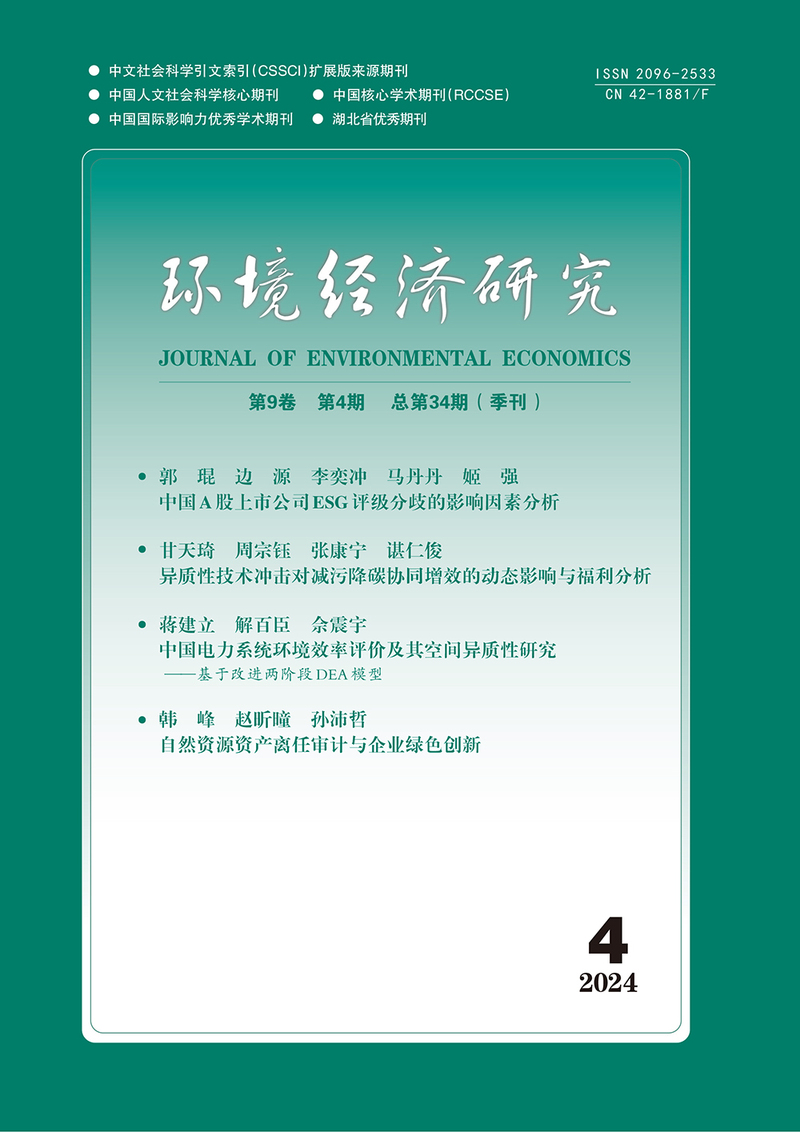Calculation on Net Value of Carbon Emission Transfer between China’s Provinces and Responsibility Sharing
Wang Wenzhi
摘要:核准我国各省份的年度碳排放量,是国家碳排放总量和碳排放强度控制目标的核心问题。基于中国省域间投入产出数据,本文采用FULL-MRIO模型测算了30
个省域的生产侧碳排放、消费侧碳排放和碳排放空间转移净值,并提出以各省域商品流出中的省内增加值占比作为分配因子,对各省域国内碳排放空间转移净值进行分配,实施碳排放责任共担。结果显示,研究期间省域间碳排放的空间转移非常显著。从地域上看,国内碳排放是从京津地区、东部沿海和南部沿海地区向其他地区转移;而从区域价值链看,国内碳排放是沿着区域价值链,从价值链的下游地区向上游地区转移。在共担责任原则下,分配后各省域的碳排放量介于生产责任原则与消费责任原则下的各省域碳排放量,并将各省域商品流动过程中的经济利益与应承担的环境成本挂钩,体现了“利益大、责任大”的分配思路。因此,本文提出将共担责任原则作为省域间碳配额分配的依据,同时要实施生态补偿政策,让碳排放净流出的省域对其引致碳排放净流入较大的省域进行补偿。
关键词 : 生产侧碳排放, 消费侧碳排放, 碳排放空间转移净值, FULL-MRIO模型
Abstract:How to measure the annual carbon emissions of Chinese provinces is a key and difficult problem to realize the target of controlling the national total carbon emissions and the carbon emission intensity. This paper estimates production-based emissions, consumption-based emissions and net value of carbon emission transfer(NVCET)between China’ s 30 provinces based on the Full Multi-Regional Input-Output Model and the provincial input-output database. Thereafter we allocate province’s domestic NVCET by using the ratio of the province’s value-added to its commodity outflows as an allocation factor. Results show that:During the study period, the spatial carbon emission transfers between the provinces are very significant. From the perspective of geographical distribution, the direction of domestic carbon emission transfers is from Beijing Tianjin region, the eastern coastal and southern coastal areas to other regions. From the perspective of local value chain, the direction of carbon emission transfers is from the downstream to the upstream of the local value chain. The carbon emissions under the principle of shared responsibility are between the carbon emissions under the principle of production responsibility and the carbon emissions under the principle of consumption responsibility. The allocation method links the economic benefits with the environmental cost of each province, and reflects the allocation principle of“the more benefits, the more responsibilities. Therefore, we propose that the government should allocate the carbon quotas according to each provincial carbon emissions under the principle of shared responsibility. Meanwhile, we suggest implementing the policy of ecological compensation. The provinces with net outflows of carbon emissions should make a compensation for the provinces with net inflows of carbon emissionswhicharemainlyinducedbythem.
Keywords: Production-based Emissions;Consumption-based Emissions;Net Value of Carbon Emission Transfer; Full Multi-Regional Input-Output Model
基金资助:本文系浙江省哲学社会科学规划课题“浙江省碳排放空间转移效应的测量及减排政策的绩效模拟”(17NDJC210YB)、教育部人文社会科学研究青年基金项目“中国省域碳排放权的初始分配及其政策模拟:基于三种碳排放责任界定原则下的评估与比较”(17YJC790157)的阶段性成果。
DOI:10.19511/j.cnki.jee.2018.01.003
